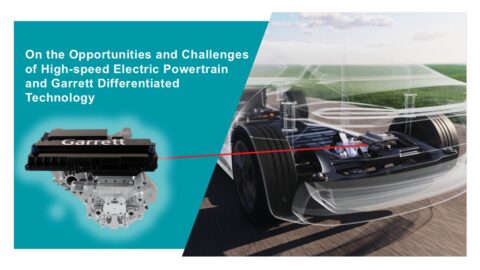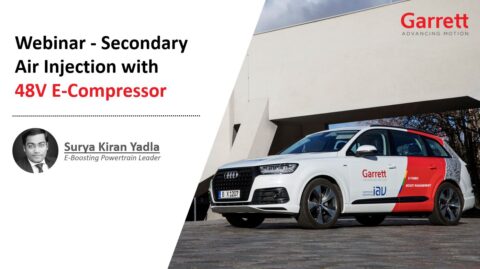Abstract
Divided turbines improve the efficiency of heavy-duty diesel engines by separating the blowdown events of consecutive cylinders, improving engine pumping and engine volumetric efficiency. Dividing the turbine housing leads to uneven flow between the two scrolls which can be characterized in terms of turbine mass flow ratio (MFR). An optimized turbine design needs to consider where the turbine energy is delivered with respect to MFR and improve turbine efficiency at the turbine operating points where most of the turbine energy is delivered. Three single-stage air handling architectures were compared based on their likelihood
of adoption for US-24/EURO-VII engines: SCR-only, HP-EGR with Reed and asymmetric HP-EGR.
The paper presents an investigation of engine operating and design parameters on turbine MFR behavior. It is concluded that, for a given engine and air system architecture, MFR is only dependent on engine speed, specific turbine flow capacity and EGR rate. Finally, a selection method for turbine MFR vs efficiency characteristic as a function of engine operating parameters is presented.
Introduction
Starting in 2014, the fuel economy of heavy-duty trucks sold in the United States has been regulated under the authority of both the Environmental Protection Agency (EPA) as well as the National Highway Traffic Administration (NHTSA) with the GHG Phase 1 and now GHG Phase 2 regulations. These standards impose both vehicle level as well as engine level fuel consumption targets. At the same time, in response to requests from California, EPA has announced intent to further reduce the allowable tailpipe NOx emissions from heavy duty trucks and engines by 2024. Referred to as the US-24 projected standard, the fuel economy and NOx rules increase demand for high-efficiency air handling systems. Similarly, for the European Union fuel consumption reduction targets are likely to increase in severity rather than reduce due to Paris COP ’21 commitments.
Key Words: divided turbine; heavy duty diesel; 6-cylinder engine; MFR; turbocharger; pulse optimized; high efficiency
This paper investigated the response of MFR range of divided turbines in SCR-only and HP-EGR (symmetric and asymmetric) air handling architectures in 6-cylinder in-line engines typical for heavy-duty diesel applications.
Abbreviations
AFR Air-fuel ratio
BMEP Break mean effective pressure
BSR Blade-speed ratio or U/Co
EAS Exhaust aftertreatement system
EGR Exhaust gas recirculation
ER Turbine expansion ratio
FA Full admission
FMC Ford Motor Company
HP-EGR High-pressure loop EGR or short-route EGR
LP-EGR Low-pressure loop EGR or long-route EGR
MFR Mass flow ratio
PA Partial admission
RDiv Radially Divided turbine
SCR Selective catalytic reduction
SDiv Sector Divided turbine
TMM Turbine mass-flow multiplier
UA Unequal admission
VVA Variable valve actuation
















